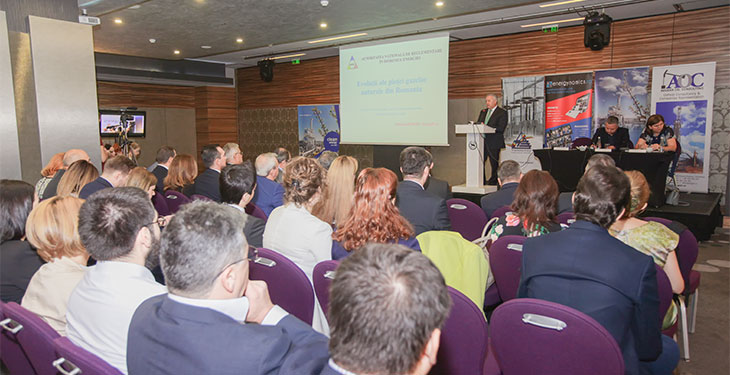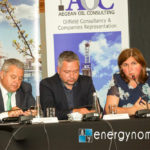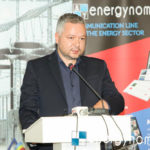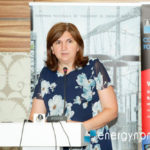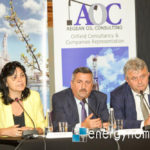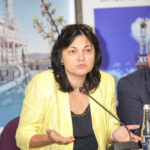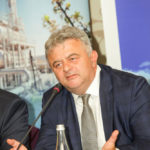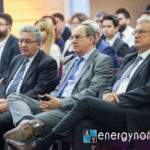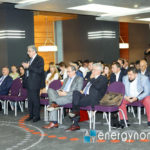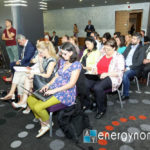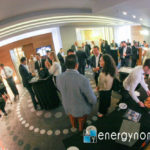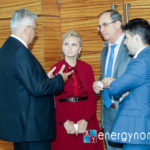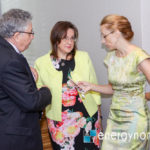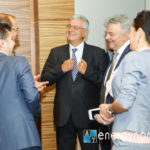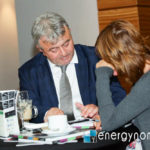This is the brief description of the situation in Romania’s energy markets – electricity and natural gas, a description which is more valid for the latter. Power suppliers are adapting to the new conditions in which peak load periods find the national energy system insufficiently flexible to allow for seamless coverage of demand and some of the secondary regulations put additional pressure on adopting optimal trade policies. The electricity market remains a model for natural gas, but the different technical and structural characteristics of the two sectors make it impossible to simply copy the rules. Dialogue between all stakeholders – legislator, regulators, system operators and companies – is mandatory for achieving a functional balance between energy security and economic sustainability.
The most recent edition of the Energy Breakfast Club brought together all the relevant energy industry voices for an analyze of the effects of the liberalization and the intensified competition on the markets. Recent developments in spot electricity markets have been the backgorund and constant point of refference of all the interventions from the six guest speakers as well as of the comments from the public. More than 80 experts and decision-makers participated in the first event of the Autumn organized by energynomics.ro with the support from ANRE, Romgaz, Transgaz, Transelectrica, ACUE and Aegean Oil Consulting.
ANRE: The market is functional, what we need is more generation capacity
At the opening of the conference, the president of ANRE Niculae Havrileț has once again described the rise in prices in the Day Ahead Market as a normal market response to climate conditions and commercial practices from players in the sector, under the circumstances of reduced production capacity. Although, in theory, Romania has an installed capacity of 22,000 MW, practically, when the demand exceeds 9,000 MW, problems with ensuring the necessary are already emerging, Havrileţ warned. “The ANRE report shows that the measure to be taken into account by the Ministry of Energy is mainly to be concerned to increase the real production capacity other than from renewable sources, because when drought there is neither water nor wind, all goes on conventional sources production, and here we have to emphasize the role of the coal producers,” Havrileţ explained.
The president of ANRE reminded of the situation in 2013, when in a period of low consumption, the renewables and Nuclearelectrica were producing at maximum, Hidroelectrica was forced to discharge from the water reserves and the Authority could not intervene to support coal based production. “Now the phenomenon is reversed: there is not enough water, there is no wind, the reactor is falling, and the suppliers come and tell us that the price is too high and we are asked to administratively intervene with a price capping. This is impossible in a market economy, in general, and in a 100% free market, even more. There is no way to interfere,” Havrileţ insisted. “The problem is that they misinformed and introduced these wrong elements in the public discourse, for those who do not know the situation. The idea was that ANRE have not done what it had had to do, that is, we did not administratively intervene to induce losses to producers,” Havrilet said.
The ANRE president also said that for the producers, this was “the most beautiful period of the last 20 years” from a financial point of view. “Suppliers lost, because they were too much exposed on a speculative market,” Niculae Havrileţ added. “The first thing we have to learn is that the price on DAM will never again be on average lower than on the long-term markets. Moreover, in the long run, the price remained the same, around 165 lei per MWh. The correct way for any supplier is to rely on futures markets while the Day Ahead Market to be nothing more than an adjustment,” the ANRE official said.
Suppliers claim distortions in the market
Ion Lungu, the president of AFEER (Romanian Electricity Suppliers Association), argued that things are somewhat more complicated, and the factors that have led to rising prices are more numerous. “I do not agree with what eas said that traders have been greedy and they lost,” Lungu said. The wholesale market is rigid, with fixed quantities and prices, while the retail market to end-users is very competitive and flexible, and more flexible trading tools should be introduced, AFEER President urged, resuming an appeal launched earlier this year.
In addition, the suppliers invoke the market distortions introduced by legislation and secondary regulation. Where ANRE and the Competition Council state that suppliers have made too much used of the spot markets, they ask rhetorically: “In the retail market, consumers can switch suppliers within 21 days, and in the wholesale market we have firm contracts that include penalties. Taking into account the fierce competition in the supply market, are the suppliers encouraged to buy fixed amounts of energy at the risk of seeing their portfolio drastically reduced within 21 days? (Cristina Micu, AFEER)”.
In turn, Silvia Vlăsceanu, Executive Director of the Association of Energy Utilities Associations (ACUE), believes that the persistence of administrative prices for the end consumer, mainly because the definition of vulnerable consumers has not been completed and their protection has not been operationalized, constitutes an element of distortion in the electricity and gas markets. In EU countries, households pay up to 80% more for energy than industrial customers. In Romania, the situation is exactly the opposite, because the consumers who really need to be protected by law have not been identified so far, the ACUE representative explained. Silvia Vlăsceanu also mentioned the blockage on the centralized universal service market (PCSU), as one of the factors that forced suppliers to make more use of the Day Ahead Market. “The cancellation of the tender on PCSU, this Summer, forced the suppliers of last resort to go on the DAM,” said Silvia Vlăsceanu. In addition, Vlăsceanu stressed: “each producer knows pretty well what portfolio every big supplier has, so the price is dictated by the producer, especially in the PCSU segment.”
In a rebuttal, Sorin Boza, President of the CE Oltenia Directorate, recalled that in April 2016, the complex was not working because to lacking of term contracts. “Why did not the suppliers come to make bilateral contracts?” asked Boza, and he urged suppliers to use mainly futures contracts; “Today, the CEO already has contracts for the energy produced by seven groups by the next year, so we seem to begin to learn some things…”
In the first seven months of 2017, CE Oltenia registered gross profit of 350 million lei, selling its energy at price higher by 6-7% on average. The main source of revenue growth is the increase in volumes (over one TWh more than in 2016). At present, the CEO is working at full capacity with 9 generation groups, Boza specified, and for the production of seven groups there were concluded term contracts at prices about 20% lower than those in DAM, at current.
New EU regulations with major impact on the markets
In his intervention,Corina Popescu, President of the Transelectrica Directorate, warned about the challenges that the new network codes adopted at European level raise for all actors in the Romanian electricity market.
From July 2015 until August, 2017, the European Commission has adopted no less than six European network codes, and by the end of this year two other codes are expected to be adopted. “With their publication in the EU Official Gazette, they become mandatory rules for the Romanian market. There is no need for transposing the laws into national legislation, but we have to comply,” said Corina Popescu. She warned that “the rules drawn for the future are very strict, and Romanian operators are not sufficiently enough aware about these rules,” which will impact in all areas of activity: the energy market, network connection, the operation of the energy system.
DOWNLOAD THE PRESENTATION OF CORINA POPESCU Implementing the new European network codes. Challenges
The effects of GEO 64 are already visible in the natural gas market
The differences between the electricity and natural gas markets are very numerous and they come not only from the technical and structural elements, but also from the lower degree of liberalization in the latter.Cornel Zeveleanu, Deputy Director General of the Department of Oil and Gas of the Ministry of Energy, referred to the transit and consumption speeds: “It is much easier to implement instruments such as the intraday market or the Day Ahead Market in a sector where the commodity circulates almost instantly, than to implement such principles in an area where it takes some time for the commodity – the natural gas – to get from one point to another “.
At turn, Vasile Ciolpan, Director of Energy Trading, Romgaz said that the gas market is partially closed for exports, while it is open to imports. In addition, the market for natural gas has changed, but it is still far from perfect and it does not solve the problems of all participants. “On the value chain from the producer to the final consumer there are all important participants – transport, supply, distribution. There are rules, such as the Transgaz network code, that works, but not as expected by all participants. Imagine that we have unclosed months since November [2016], when we started the daily balancing,” Ciolpan explained.
Among the lessons provided by the electricity market , Romgaz’s official referred to the achieved understanding that distinct commercial code and technical code are required. “Also in the natural gas market, this distinction would help many of the participants, because we often try to solve with commercial tools problems of the network code and Transgaz-related operational problems,” Vasile Ciolpan said.
The gas market was partially liberalized on 1 April 2017, when a market mechanism for price formation of natural gas from domestic production was introduced, when GEO 64/2016 entered into force. “With natural gas, we have a market embryo, which to a certain extent meets the needs of the participants,” Ciolpan said. “I can tell you this, because, for 2017, we have by far exceeded the statutory trading requirements imposed by the law, at prices where demand and supply have met”, close to 71-72 lei per MWh.
Both Vasile Ciolpan and Cornel Zeveleanu spoke in favor of keeping the legislative changes as included in GEO 64/2016 also in the final form to be approved by the Parliament.
Vasile Ciolpan stressed that rules must exist, in the free market also, but they have to stop where they influence the manifestation of demand and supply. In the context of what is happening at present in the electricity market, Ciolpan said “it is not normal for ANRE to block or set any prices.”
DOWNLOAD THE PRESENTATION OF NICULAE HAVRILEȚ Evolution of the Gas Market 2011-2017
Over 80 representatives from ACUE, Aegean Oil Consulting, AFEER, Ambasada SUA, ANRE, Axpo Energy Romania, BCR, Business Lease, CE Oltenia, Cert International, CEZ Group, CIS GAZ, Compania de detectivi NEI, Conpet, Consiliul Concurenței, CMS, E&Y, ELCEN, Elektra Renewables, Enel, EnergoBit, Energy Policy Group, Hotel Golden Tulip, Hunt Oil, Jereh, Mazars Romania, MET, Ministerul Energiei, Moneycorp, Montana Energy Group, Next Energy Distribution, Next Energy Partners, NIS Petrol, OMV Petrom, Pachiu si Asociații, Paicu&Sons Consulting, RCS-RDS, Ringhel, Roland Berger, Romelectro, Romgaz, RWE, S&T, Sand Hill, SIER, Stratum Energy, Transelectrica, Transgaz, UMEB Elektromotoren, Veolia Energie Romania, Volvo attended the presentations and participated in discussions.
Media partners for the event wereAgerpres, Radio România Actualități, Klarmedia, Realitatea TV, România Liberă. Sursa Zilei.

Participation
This year, energynomics.ro aims to organize at least 10 Energy Breakfast Club meetings. The schedule and the proposed themes for 2017 are available in the Energy Breakfast Club dedicated page.
